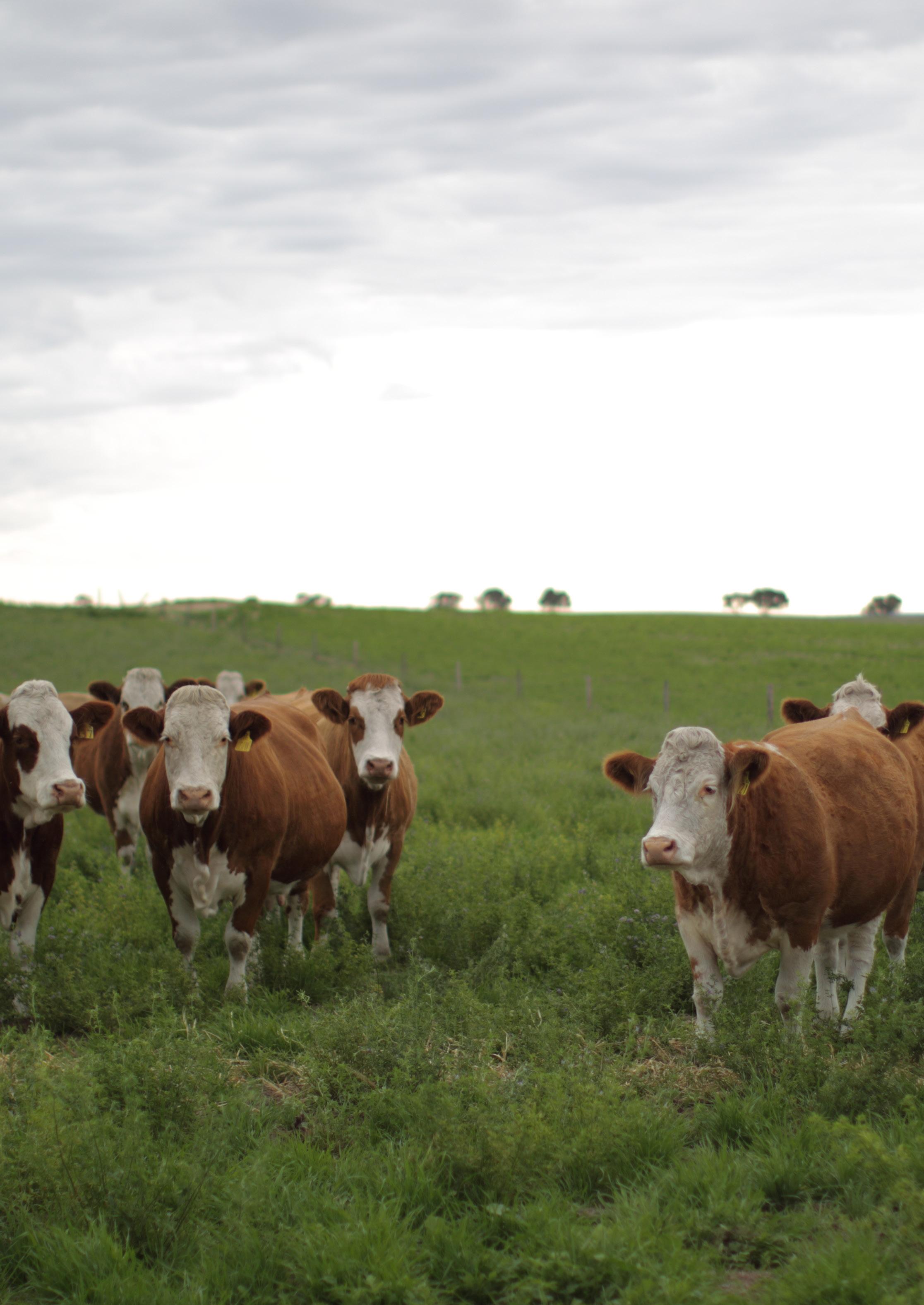
5 minute read
Considering A Soil Carbon Project – What You Need To Know?
CYDECTIN® PLATINUM DUAL ACTIVE LV POUR-ON FOR CATTLE FROM VIRBAC WORLD FIRST DEVELOPMENT FOR AUSTRALIA
Australian cattle producers require more than just highly effective Animal Health products. They need reliability, trust and peace-of-mind that the products they choose work the way they’re intended. They need healthier, more productive cattle as well as safer pastures.
Advertisement
Most are strapped for time and need to be ready to move when the market does. But most importantly, they need products that are safe to use and are well tolerated by their animals.
THE NEXT GENERATION HAS ARRIVED:
Cydectin® Platinum is the world’s first dual active cattle drench containing moxidectin and levamisole that ticks the boxes for Australian cattle producers. Virbac’s latest addition to the Cydectin® franchise, Cydectin® Platinum, offers the potency and the persistency of Moxidectin as well as the broad spectrum activity of dual actives. It delivers reduced pasture contamination for 21-35 days, a short meat WHP and ESI and is non-irritant, all in the convenience of a low volume pour-on1
THE MOST RECENTLY TRIALLED CATTLE DRENCH IN AUSTRALIA:
Cydectin® Platinum is the most recently developed and trialled drench to hit the Australian market. It has been rigorously tested in registration trials around Australia against current worm strains from key cattle regions. You can be confident in recommending Cydectin® Platinum as a product that will perform under current Australian field conditions.
INNOVATION TO THE CORE:
Innovative DMI-SorbTM Technology provides a pour-on that stays-on. Although it’s the first veterinary use of its kind in Australia, DMI (dimethyl isorbide) is well known and widely used in the human cosmetic industry. DMISorb™ keeps the product concentrated to the areas where it is applied, with less run-off or spread, it enhances absorption of the actives into the body and reduces absorption variability between animals. Cydectin® Platinum is rainfast and does not cause irritation to the skin or damage the hide when used as directed.
WHAT THE EXPERTS SAY ABOUT PRODUCTIVITY AND EFFICACY:
Leaving worms behind in cattle can lead to significant productivity losses. A number of studies have shown that the use of dual active drenches against resistant worms increased productivity compared to popular single active endectocide drenches.2,3 To protect productivity, producers should always use a drench with the highest efficacy.
The research behind dual actives and ‘combination theory’ support the use of Cydectin® Platinum as the choice for all treatment points.,4,5 Cydectin® Platinum should be used wherever a single active drench (including Cydectin Pour-on) is currently used.
SWITCHING TO A DUAL ACTIVE CATTLE DRENCH HAS NEVER BEEN EASIER:
Farmers can now move to a combination drench to improve worm control, delay resistance AND keep the benefits they’ve come to expect - potency, persistency, short WHPs with no known impact on dung beetles. Cydectin® Platinum is proudly Australian made at Virbac’s manufacturing facility at Penrith, NSW and supports Australian jobs.
Product Ivomec® Pour-on Cydectin® Pour-on Dectomax® Pour-on Eprinex® Pour-on Eclipse® Pour-on Cydectin® Platinum
*Pubcris, APVMA Registered* Age of Product 1994 26 years 1996 24 years 1997 23 years 1998 22 years 2011 9 years 2020
MORE INFORMATION: au.virbac.com/platinum | 1800 242 100
REFERENCES: 1 Refer to registered label 2 Canton et., al. (2019) Impact on beef cattle productivity of infection with anthelmintic-resistant nematodes, New Zealand Veterinary Journal, 68:3, 187-192. 3 Fazzio et., al, (2014). The effect of anthelmintic resistance on the productivity in feedlot cattle. Veterinary Parasitology, 206. 4 Kaplan (2020) Biology, Epidemiology, Diagnosis, and Management of Anthelmintic Resistance in Gastrointestinal Nematodes of Livestock, Veterinary Clinics of North America Food Practice, Vol 36, Issue 1 17-30 5 Leathwick and Besier (2014), The management of anthelmintic resistance in grazing ruminants in Australasia – strategies and experiences. Veterinary Parasitology, 204(1):44-54.

CONSIDERING A SOIL CARBON PROJECT – WHAT YOU NEED TO KNOW?

Peter Spies, Agricultural Consultant Thomas Elder Consulting
Soil Organic Carbon represents the largest terrestrial sink for carbon stocks and is directly linked to agricultural productivity – the higher the SOC level, the more productive the land.
Soil carbon projects offer a no-regrets pathway to scalable sequestration because they avoid the negative carbon/ land use trade-offs of tree planting schemes. Major soil disturbance results in the loss of SOC. This happens quickly under long fallow and conventional tillage but complete ground cover with green growing plants can reverse SOC loss.
Consequently, there is widespread interest in pasture cropping and zero, no-till and conservation farming practices. Improved grazing practices have the potential to sequester carbon in extensive native pastures, particularly deep-rooted perennial grasses and legumes. Based on previous studies, a conservative estimate of the expected rates of sequestration applicable to Australia appears to be around 0.5 to 1 tonne carbon per hectare per year through improved grazing practices (such as rotational cell grazing, deep rooted perennial pasture species). However, sequestration may be higher or lower depending on soil type, climate and management practices. I can provide guidance here.
HOW TO REBUILD SOIL CARBON
The Australian Government’s Emissions Reduction Fund (ERF) offers incentives for the establishment of eligible greenhouse gas (GHG) abatement projects through emissions avoidance or increased carbon sequestration. The Measurement of Soil Carbon Sequestration in Agricultural Systems Methodology creates the opportunity for all eligible farming enterprises, including appropriate grazing, cropping and horticulture, to increase soil sequestration and create carbon credits.
I believe with applied biology, increase/ changes to deep rooted perennial legumes, and forages in rotation, we will be able to increase soil carbon considerably in cultivation country and extensive grazing areas. These changes would be applicable under “material change of practice” and eligible as a soil carbon project. The activities will need to be implemented following project registration and include: > Applying nutrients, lime or gypsum to improve soil health. > Installing new irrigation with water sourced from privately-funded farm water efficiency savings. > Re-establishing or rejuvenating a pasture by seeding. > Establishing and maintaining a pasture where there was previously no pasture (cropland or bare fallow). > Altering stocking rate, duration or intensity of grazing. > Retaining stubble after crop is harvested. > Converting from intensive tilling to reduced or no tilling practices. > Modifying landscape features to remediate soils. > Using mechanical means to add or redistribute soil through the soil profile.
PRODUCTIVITY WINS
However, this is just the ‘icing on the cake’. The more tangible and direct benefits from increased soil carbon include yield










